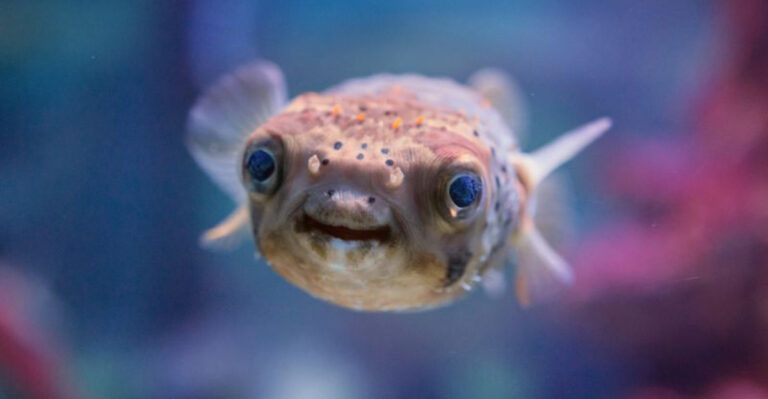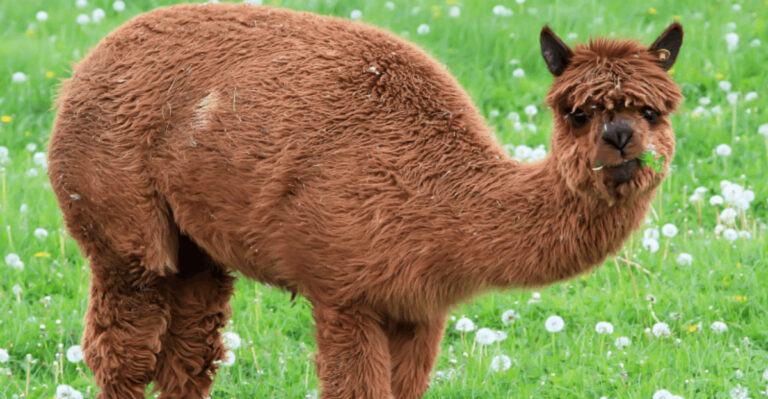26 Scary-Looking Animals That Are Actually Harmless
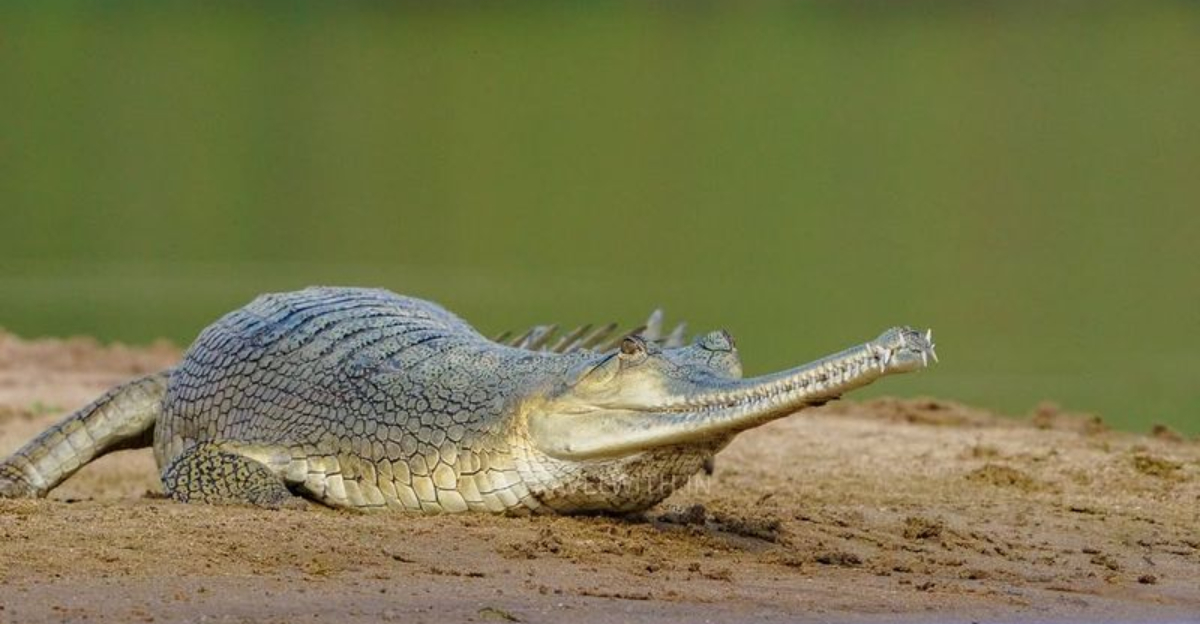
Some animals may appear intimidating at first glance, but beneath their fearsome exterior lies a gentle nature.
This list introduces you to creatures that, despite their scary looks, pose no threat to humans. Prepare to be surprised and delighted by these fascinating animals that defy their appearances.
1. Aye-Aye
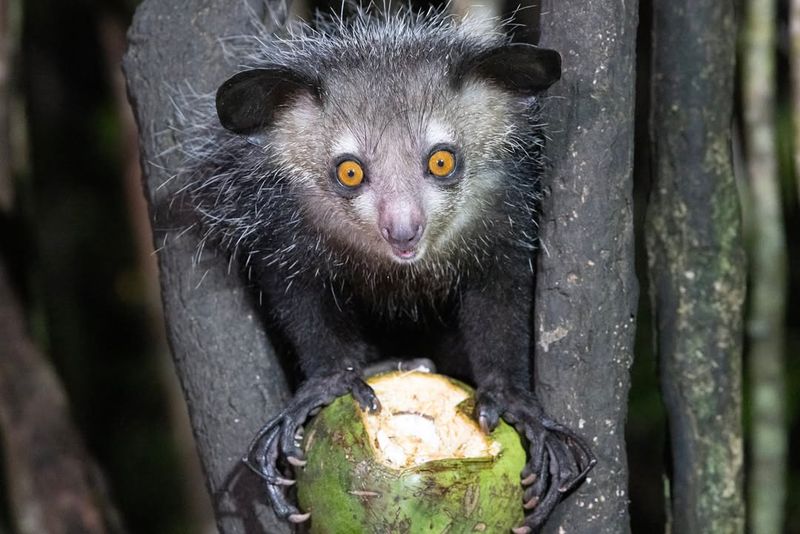
The Aye-Aye, native to Madagascar, might appear spooky due to its peculiar long middle finger and wide eyes. However, this lemur is anything but menacing. Its unique finger is not meant for casting curses but for foraging insects from tree bark—nature’s own version of a Swiss Army knife.
With a nocturnal lifestyle, the Aye-Aye uses its finger like a stethoscope, tapping on wood to find grubs. It then gnaws holes with its rodent-like teeth to extract its meal. Although its appearance inspired local myths of misfortune, the Aye-Aye is merely a misunderstood creature trying to enjoy its supper in peace.
Despite its eerie reputation, the Aye-Aye plays a crucial role in its ecosystem by controlling insect populations. So next time you see this wide-eyed wonder, remember it’s just another bug-loving lemur doing its part for the environment.
2. Tarsier
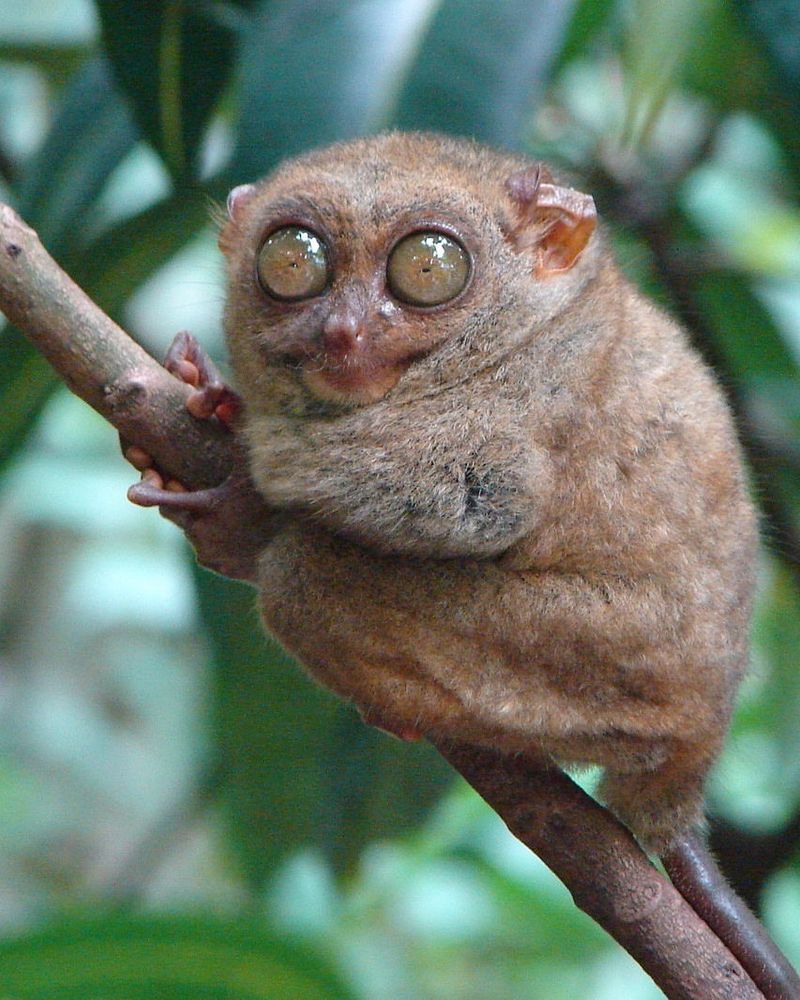
With eyes as large as its brain, the Tarsier might seem like a creature from another world. This small primate hails from Southeast Asia and is renowned for its extraordinary night vision. Its bulbous eyes might make it look permanently surprised, but they’re perfectly adapted for nocturnal life.
Despite their bug-eyed appearance, Tarsiers are gentle creatures that pose no threat to humans. They spend their nights leaping from branch to branch in pursuit of insects and small animals. Their elongated tarsal bones—hence the name—enable these impressive acrobatics.
Tarsiers communicate with ultrasonic calls, which are inaudible to human ears. This secretive chatter helps them maintain social bonds in the dense jungle. So, if you spot a Tarsier glaring at you with those enormous eyes, rest assured it’s just going about its business, perhaps wondering why you’re in its forest.
3. Gharial
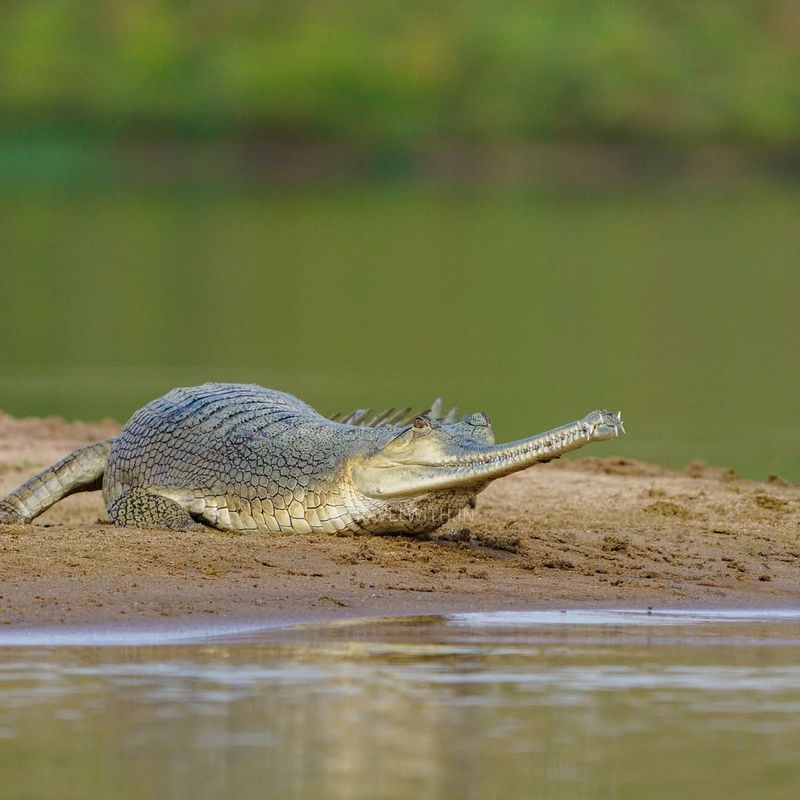
The Gharial’s long, narrow snout bristling with sharp teeth might send shivers down your spine. Native to the Indian subcontinent, this crocodilian looks like it’s straight out of a prehistoric era. Despite its fearsome dental display, the Gharial is a fish specialist and poses little threat to humans.
With a diet primarily of fish, the Gharial’s teeth and jaw shape are perfect tools for snatching slippery prey out of the water. Its unique snout, which ends in a bulbous growth known as a ‘ghara,’ is more for show than anything else, aiding in vocalization and mating displays.
Gharials spend most of their time basking on riverbanks, appearing menacing but acting harmless. Conservation efforts are ongoing to protect these misunderstood reptiles, whose existence is crucial for maintaining healthy fish populations. Next time you see one, appreciate its ancient lineage and ecological role.
4. Horseshoe Crab
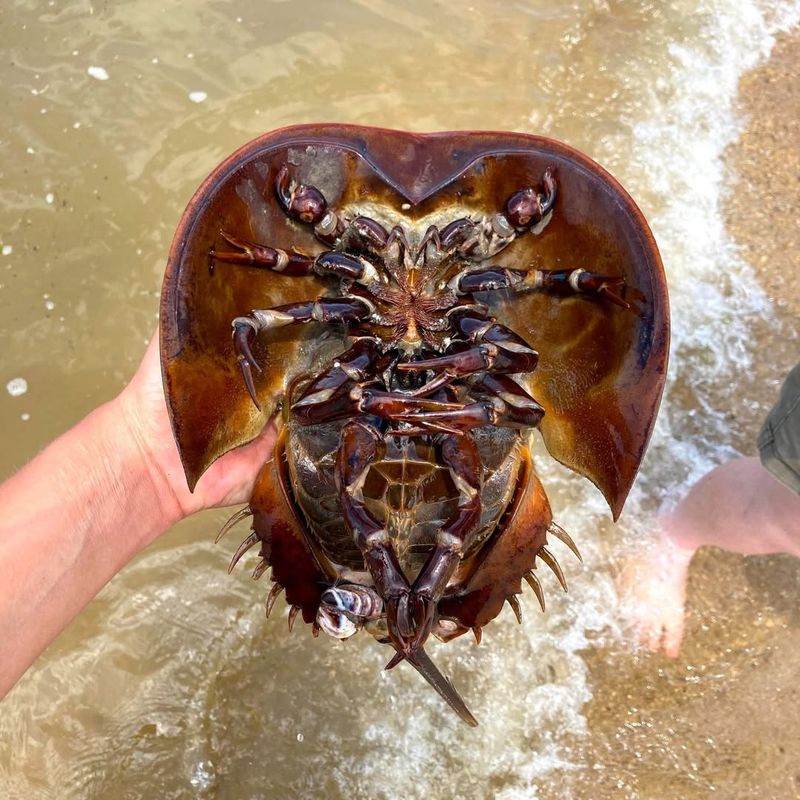
With a spiky tail and armored body, the Horseshoe Crab might look like a medieval knight’s pet. Despite its daunting exterior, this ancient marine arthropod is entirely harmless to humans. Its tail isn’t a weapon but a tool to help it flip over when turned upside-down.
Horseshoe Crabs have been around for over 450 million years, surviving multiple mass extinctions. Their blue blood is valuable for medical research, helping to ensure the safety of vaccines and medical devices. They spend their days scuttling along the ocean floor, feeding on worms and small mollusks.
These fascinating creatures play a vital role in their ecosystem, with their eggs providing food for migrating birds. So, while they may look like something out of a science fiction movie, Horseshoe Crabs are just ancient mariners contributing to modern medicine and coastal ecosystems.
5. Giant African Millipede
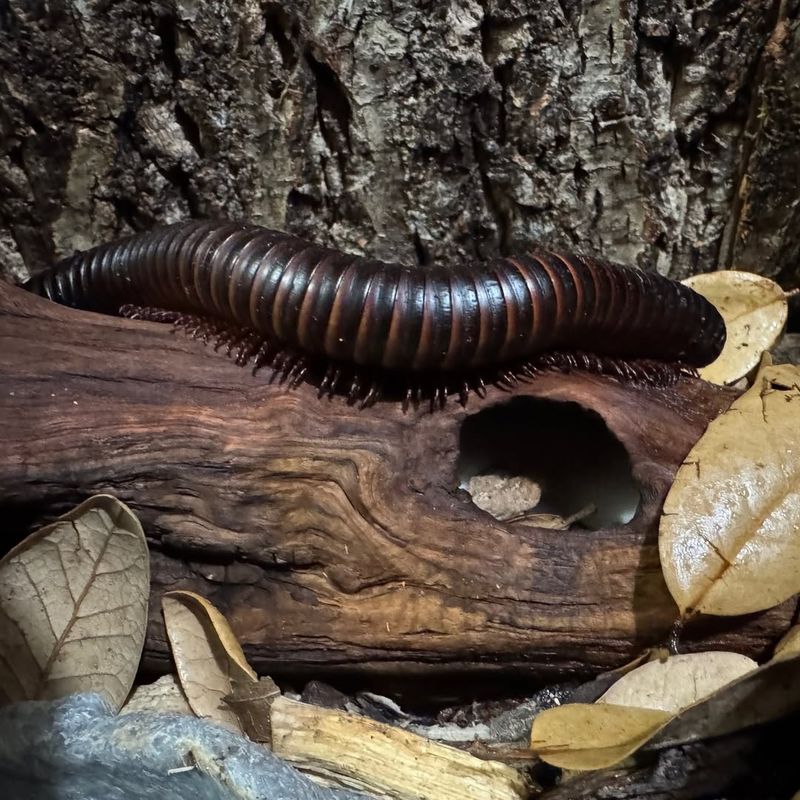
The Giant African Millipede, with its multitude of legs and long segmented body, might give some people the creeps. But fear not, this terrestrial arthropod is as harmless as they come. Despite its daunting size—growing up to 15 inches long—it’s a gentle decomposer of the forest floor.
Feeding mainly on decaying plant material, the millipede plays an essential role in nutrient cycling. Its many legs are not for speed but for burrowing and navigating through leaf litter, aiding in its quest for organic matter.
When threatened, the Giant African Millipede curls into a tight spiral, protecting its vulnerable underside. Its passive defense mechanism is a testament to its non-aggressive nature. So, while its appearance may be startling, this millipede is just another gardener of the forest, contributing to the health of its ecosystem.
6. Vampire Bat
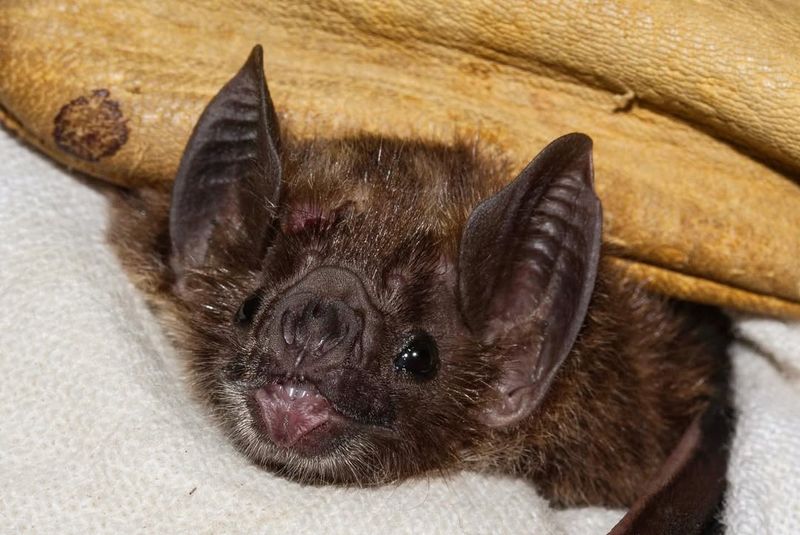
The Vampire Bat’s name might conjure images of bloodthirsty creatures, but the reality is far less dramatic. These small bats, found in Central and South America, do feed on blood, but they’re more like nocturnal nurses than monsters.
Vampire Bats use heat sensors on their noses to locate blood vessels near the skin of their prey, usually livestock. Their saliva contains anticoagulants that keep the blood flowing while they take their tiny meal. The process is quick and often unnoticed by the animal.
Despite their name, Vampire Bats pose no threat to humans. They’re more interested in cows and horses than people. In fact, their saliva is being studied for medical benefits, potentially aiding in stroke recovery. So, while their reputation might be sinister, these bats are just misunderstood night-shift workers of the animal kingdom.
7. Basking Shark
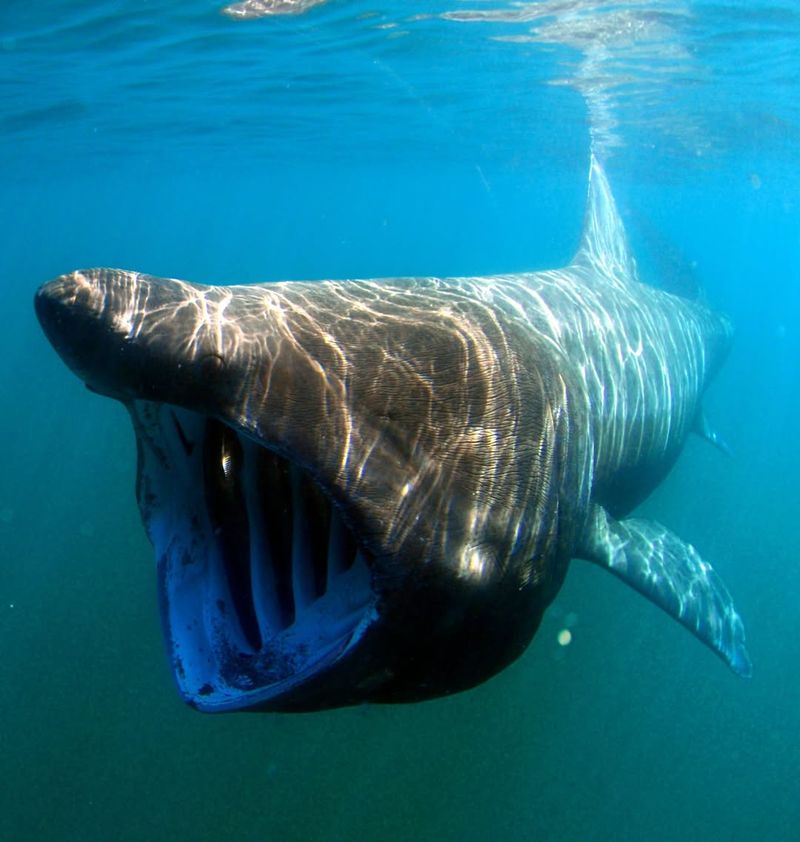
The Basking Shark, with its gaping mouth and massive size, might seem terrifying, but it’s just a gentle giant. These ocean dwellers are the second largest fish in the world, yet they only feast on tiny plankton, not humans.
Swimming leisurely through the ocean, Basking Sharks filter plankton from the water using their specialized gill rakers. Despite reaching lengths of up to 40 feet, they’re harmless to divers and swimmers, more akin to swimming vacuum cleaners than predators.
Their slow movement and passive feeding habits make them an integral part of the marine ecosystem, helping maintain plankton populations. So, next time you see a Basking Shark looming in the water, remember it’s just on its endless quest for microscopic meals, not a giant sea monster of the deep.
8. Mata Mata Turtle
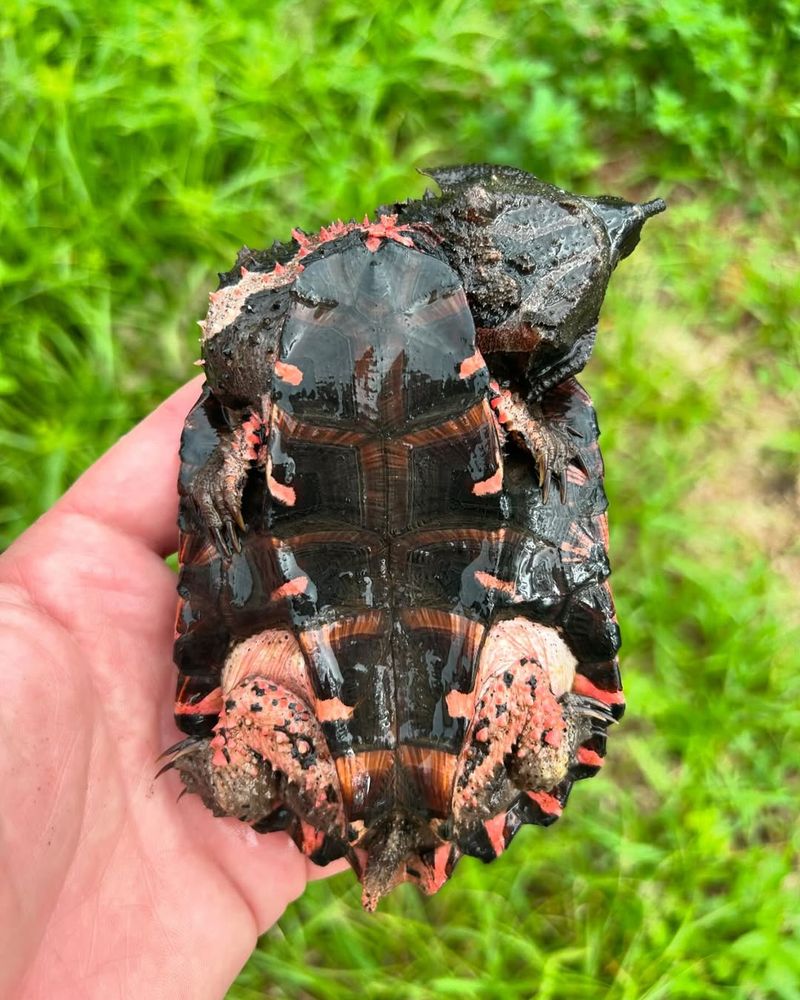
The Mata Mata Turtle looks more like a pile of leaves than a reptile, perfectly adapted to its Amazonian habitat. Its bizarre, leaf-like appearance is designed for camouflage, making it an expert in the art of disguise.
Despite its menacing look, the Mata Mata is a docile creature that poses no threat to humans. It’s a sedentary turtle that prefers to ambush its prey, mainly small fish. By extending its neck rapidly, it creates a vacuum to suck in unsuspecting fish.
While it might look like it belongs in a horror movie, the Mata Mata Turtle is a master of patience and stealth. Its unique appearance is a testament to evolutionary ingenuity, making it a fascinating subject for those lucky enough to spot one in its natural habitat.
9. Thorny Devil
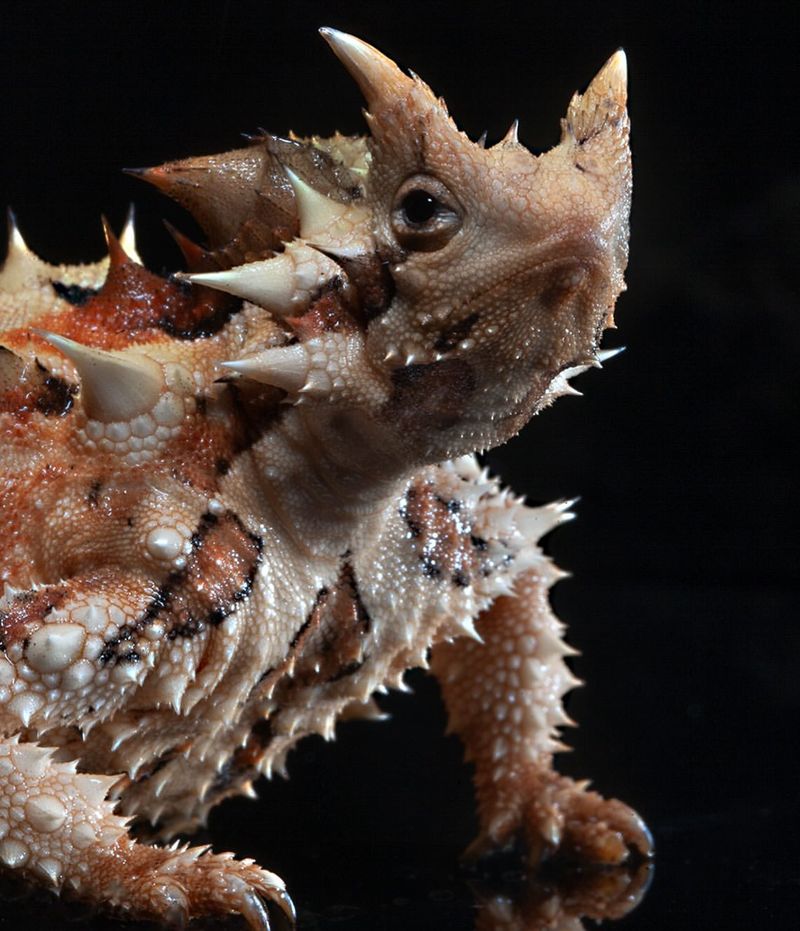
The Thorny Devil, or Thorny Dragon, might look like a miniature dinosaur with spikes, but this Australian lizard is completely harmless. Its fearsome appearance serves as a deterrent to predators, not as a weapon.
Covered in conical spines, the Thorny Devil’s main diet consists of ants. Its spiky exterior helps it blend into the arid desert landscape, where it uses its specialized skin to collect water by channeling dew to its mouth.
Despite its intimidating look, the Thorny Devil is a peaceful creature, relying on its camouflage and stillness to avoid detection. So, while it might seem poised for battle, this lizard is more interested in a quiet life, sipping dew and munching on ants in the vast Australian outback.
10. Vinegaroon
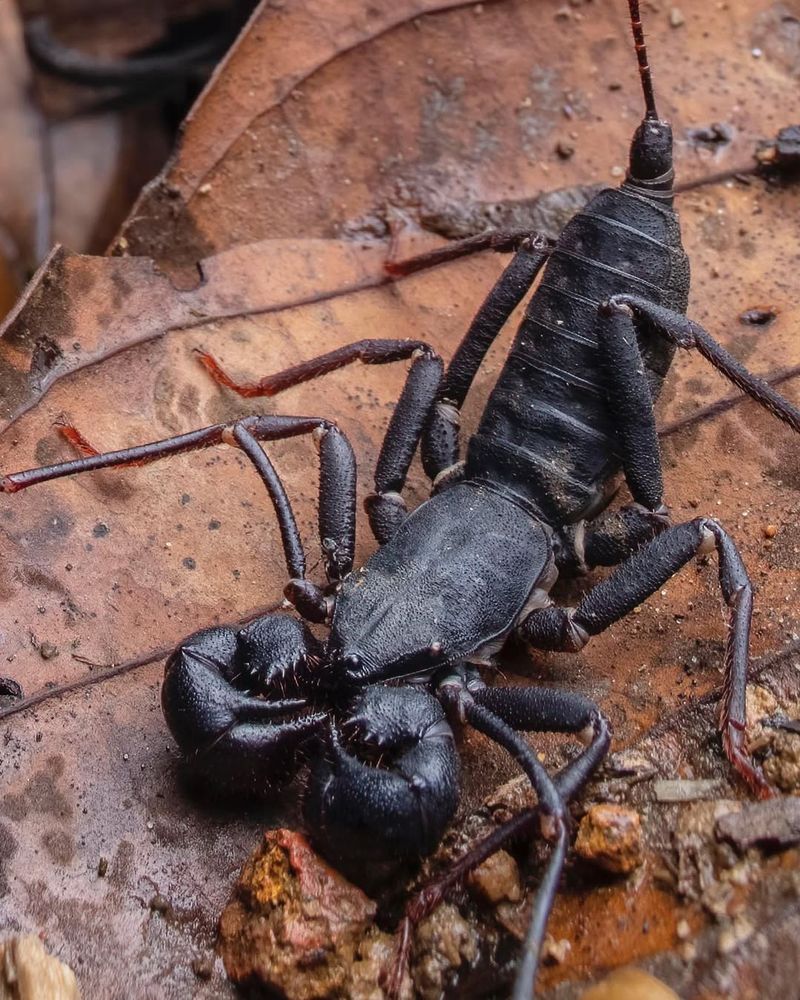
The Vinegaroon, also known as a Whip Scorpion, might look like a creature from a nightmare with its pincers and whip-like tail. However, this arachnid is all bark and no bite.
Despite its appearance, the Vinegaroon is harmless to humans. It uses its pincers to catch prey and its tail, not for stinging, but for defense. When threatened, it sprays a harmless vinegar-like substance to deter predators, hence the name.
Vinegaroons are beneficial creatures that help control pest populations. So, while they might look like tiny monsters, they’re just part of nature’s pest control team, keeping the ecosystem in balance with their unusual method of defense.
11. Frilled Shark
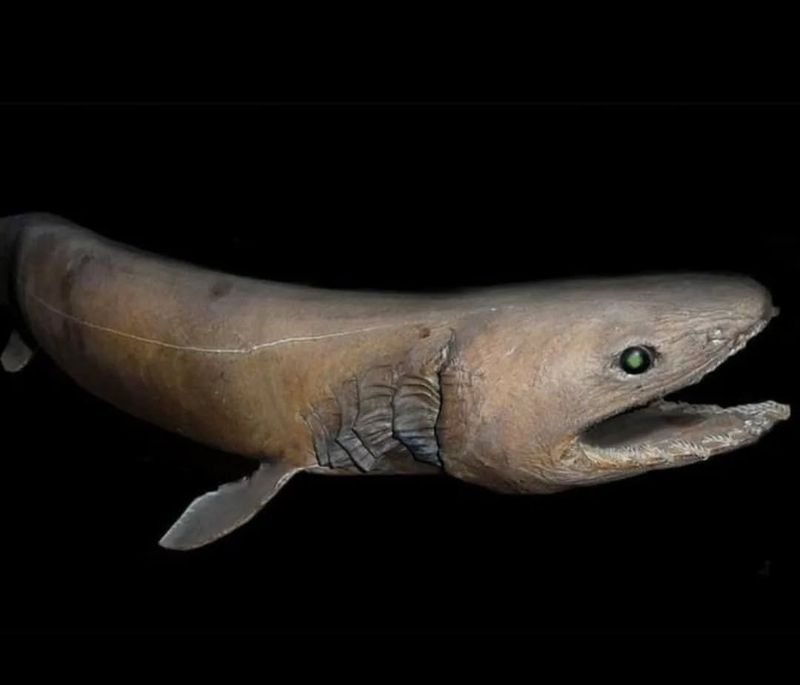
The Frilled Shark’s prehistoric appearance often earns it the title of ‘living fossil.’ With a serpentine body and gaping jaws, this deep-sea resident might send shivers down your spine. However, this shark is far from a threat to humans.
Living at ocean depths of up to 5,000 feet, the Frilled Shark has little interaction with people. It uses its flexible jaw to swallow prey whole, but its diet consists mainly of fish and squid, not curious divers.
Frilled Sharks are rarely seen and pose no danger to human swimmers. Their existence helps scientists understand ancient marine life, linking the past with the present. So, while appearances may deceive, this shark is just a reclusive relic of the deep-sea world.
12. Goblin Shark
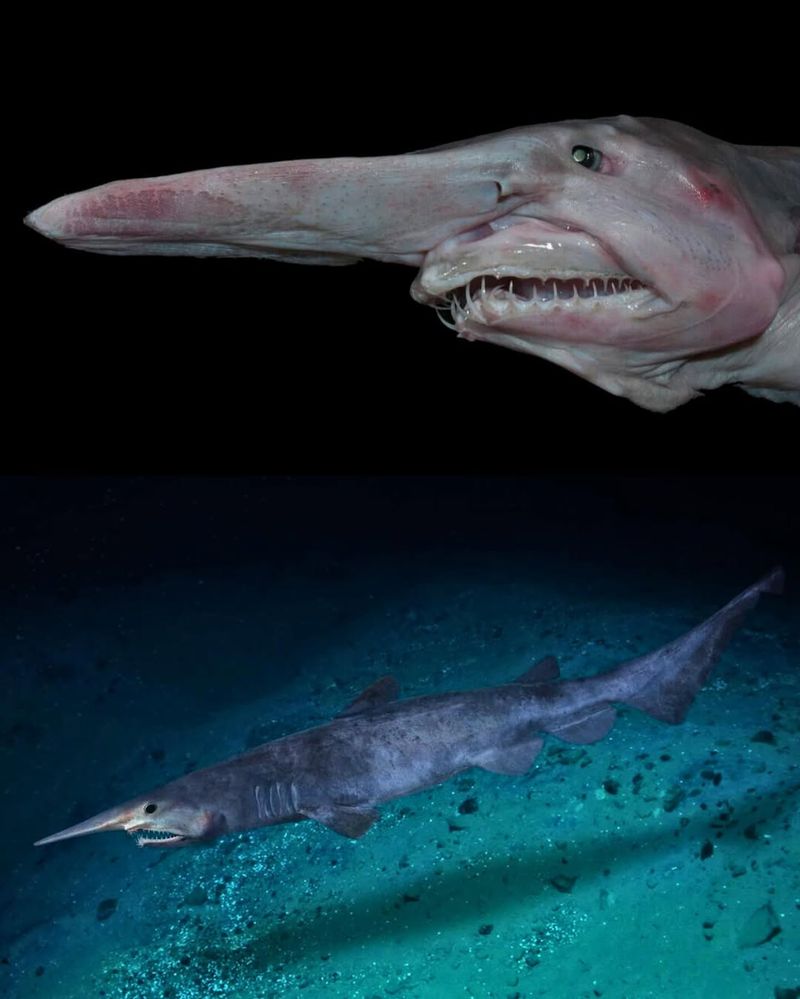
The Goblin Shark, with its long snout and protruding jaws, looks like something from a horror movie. Native to deep-sea waters, this shark is bizarre, not bloodthirsty.
Its unique appearance helps it detect prey in the dark ocean depths. Using its snout as a sensor, the Goblin Shark can sense electrical fields emitted by other fish, allowing it to hunt efficiently in near-total darkness.
Despite its frightening visage, this shark poses no threat to humans, living far beyond the reach of recreational divers. Goblin Sharks are rarely encountered, and their peculiar features continue to intrigue marine biologists. While it might look terrifying, it’s merely a curious deep-sea dweller with extraordinary adaptations.
13. Glass Frog
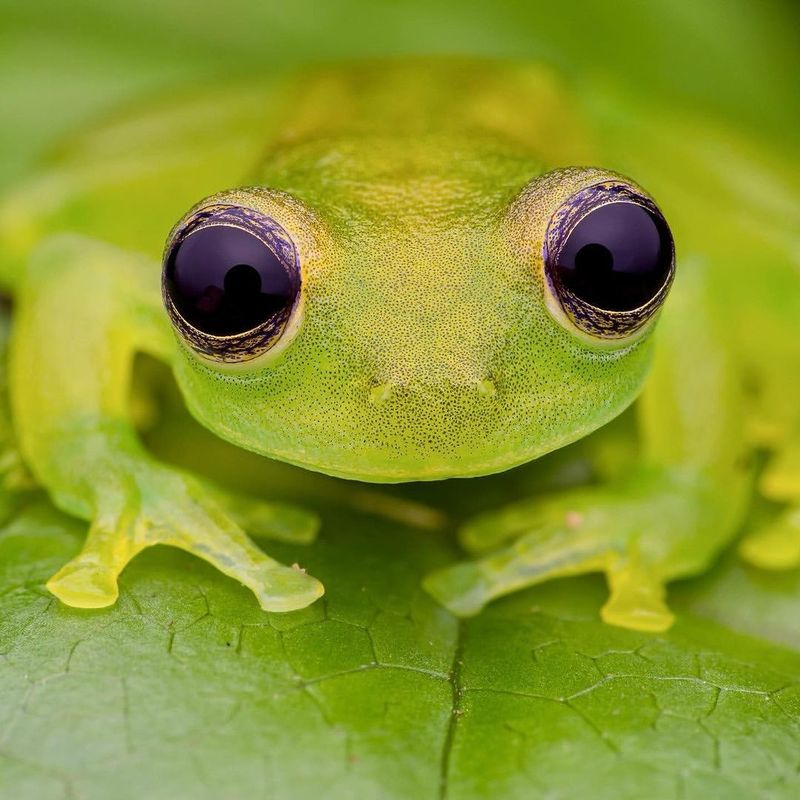
The Glass Frog’s see-through skin might seem like a scientific experiment gone wrong, but it’s a natural marvel. Found in Central and South America, these frogs allow you to see their internal workings through their transparent bellies.
Despite its ghostly appearance, the Glass Frog is harmless and more of a novelty than a nightmare. Its transparency provides camouflage, helping it blend with the rainforest foliage, escaping predators’ attention.
These frogs play a vital role in their ecosystem as insect controllers, munching on bugs that would otherwise overrun their habitat. So, despite their eerie transparency, Glass Frogs are just another example of nature’s incredible ingenuity in the world’s lush rainforests.
14. Sea Pig
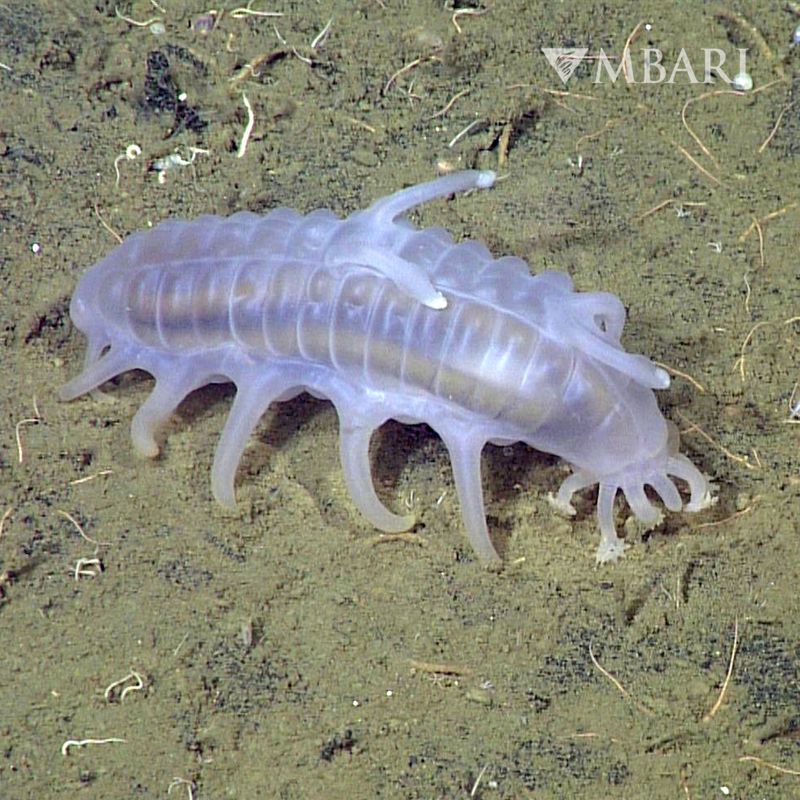
The Sea Pig, named for its pig-like snout, might look like a creature from the abyss, but it’s just a peculiar type of sea cucumber. Living on the ocean floor, these creatures are the janitors of the sea.
Despite their odd appearance, Sea Pigs are harmless, feeding on organic particles found in the sediment. Their tube-like feet help them move through the deep-sea mud, vacuuming up detritus as they go.
Sea Pigs play an essential role in the oceanic ecosystem, recycling nutrients and maintaining the health of the seabed. So, next time you hear of a Sea Pig, picture them as the diligent custodians of the ocean, not the monsters of the deep.
15. Mole Rat
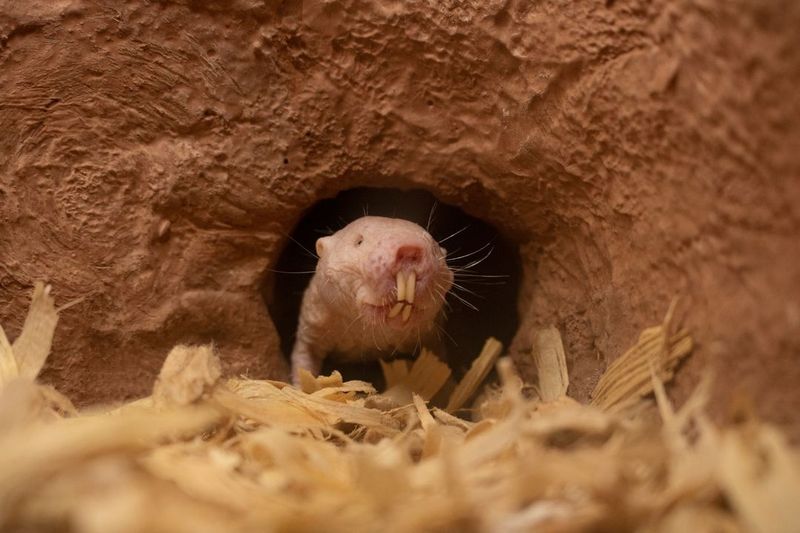
The Naked Mole Rat’s appearance might raise eyebrows with its wrinkled skin and prominent teeth. However, this subterranean rodent is a fascinating study in adaptation and social structure.
Despite its odd looks, the Naked Mole Rat is harmless and lives in highly organized colonies. Its incisors are used for digging extensive tunnel networks underground, where it forages for roots and tubers.
These creatures are renowned for their resistance to cancer and pain, making them subjects of scientific research. While their appearance might be unconventional, Naked Mole Rats are simply nature’s hardy underground engineers, thriving in harsh environments with remarkable resilience.
16. Opossum
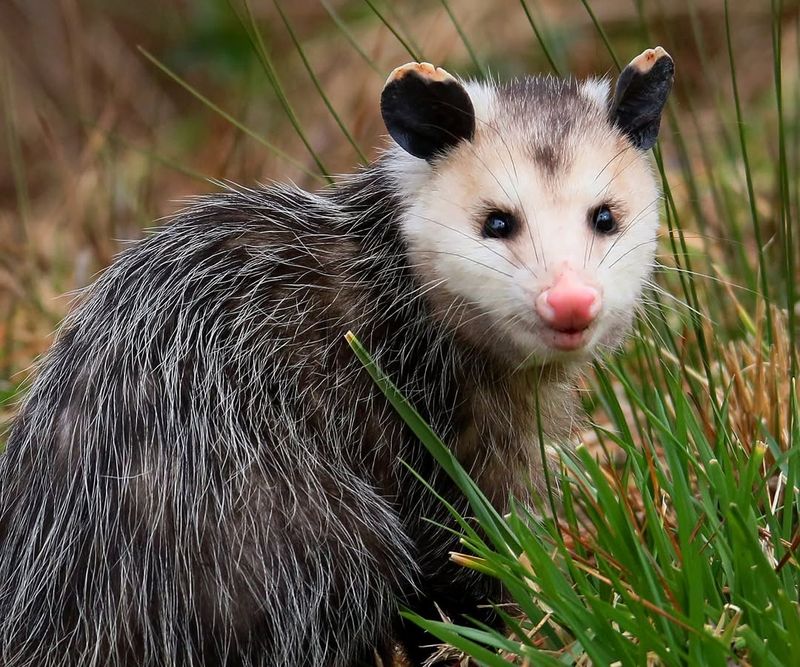
The Opossum, with its sharp teeth and beady eyes, might seem like a backyard villain. However, this nocturnal marsupial is more helpful than harmful.
Opossums are known for their ability to play dead when threatened, a strategy that often confuses predators. They’re also excellent at controlling pests, feasting on ticks, insects, and small rodents.
While they might raid garbage cans, Opossums are largely beneficial, keeping pest populations in check. So next time you spot one with its jaws open, remember it’s just passing through, doing its part in the urban ecosystem.
17. Tailless Whip Scorpion
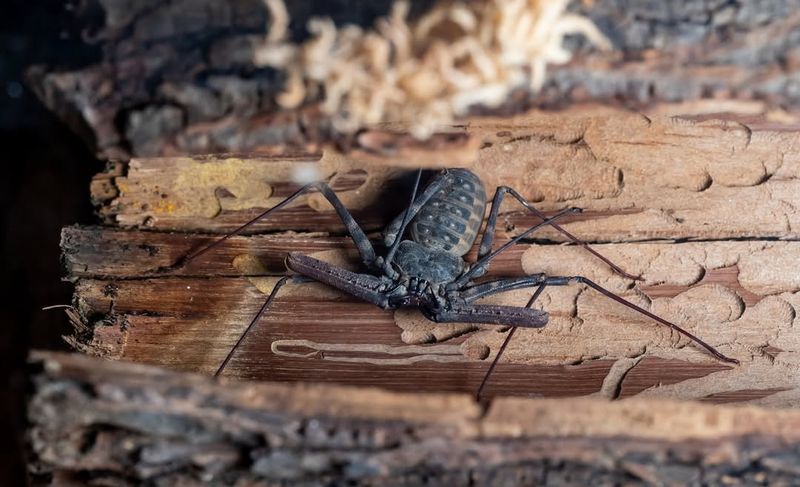
With its long legs and pincers, the Tailless Whip Scorpion might look like a creature from a sci-fi horror. Despite its daunting appearance, this arachnid is harmless to humans.
Tailless Whip Scorpions lack venom and use their pincers to catch insects. Their whip-like feelers help them navigate dark caves, where they play a crucial role as pest controllers.
These arachnids are more likely to scuttle away than engage with humans. While they might look intimidating, Tailless Whip Scorpions are just another piece of the cave ecosystem, maintaining balance with their effective pest control.
18. Star-Nosed Mole
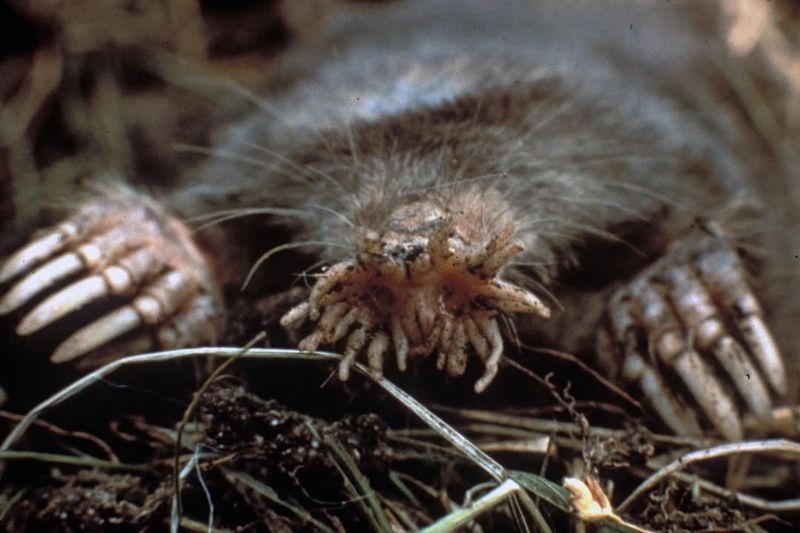
The Star-Nosed Mole’s peculiar nose, resembling a pink starburst, might inspire nightmares, but it’s an extraordinary sensory organ. This mole uses its nose to detect prey in the dark underground.
Despite its odd appearance, the Star-Nosed Mole is harmless, living in wetland areas where it forages for insects and small invertebrates. Its sensitive nose is a marvel of evolution, allowing it to hunt with precision.
These moles are incredibly efficient, using their star-nose to identify and consume prey in milliseconds. While it might look strange, the Star-Nosed Mole is just another example of nature’s inventive adaptations for survival in unique habitats.
19. Goliath Birdeater
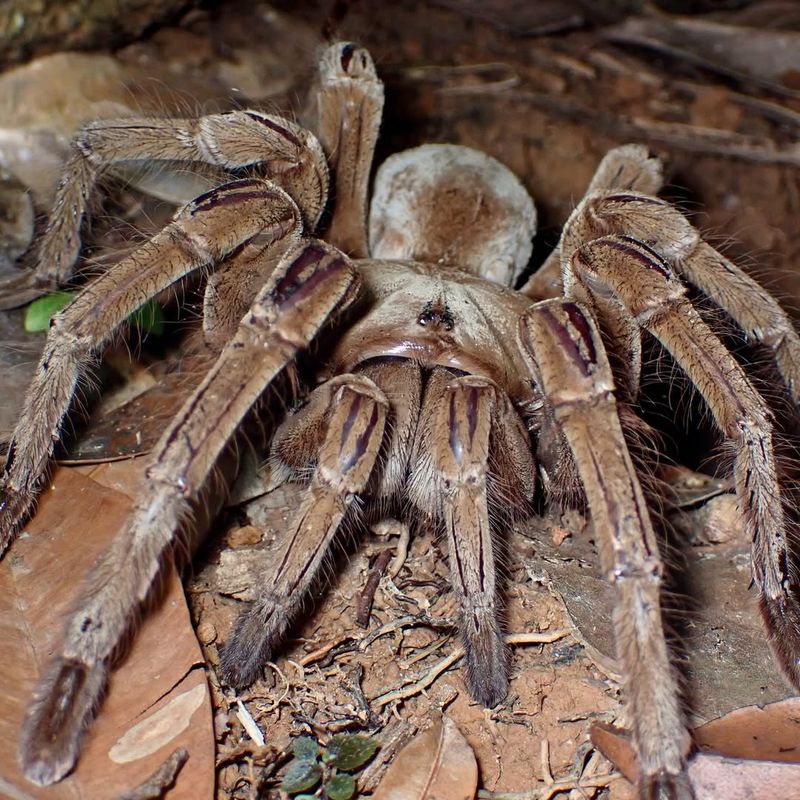
The Goliath Birdeater, the world’s largest tarantula, might send shivers down the spine of arachnophobes. However, despite its size and hairy appearance, this spider is not a threat to humans.
Found in the Amazon rainforest, it preys primarily on insects and small vertebrates. Its name is more legend than fact, as it rarely eats birds. Despite its intimidating looks, its venom is mild and not dangerous to people.
The Goliath Birdeater uses its size to intimidate predators rather than attack. While it might look like a nightmare, this tarantula is a gentle giant of the rainforest, playing its part in the ecosystem as both predator and prey.
20. Hammerhead Bat
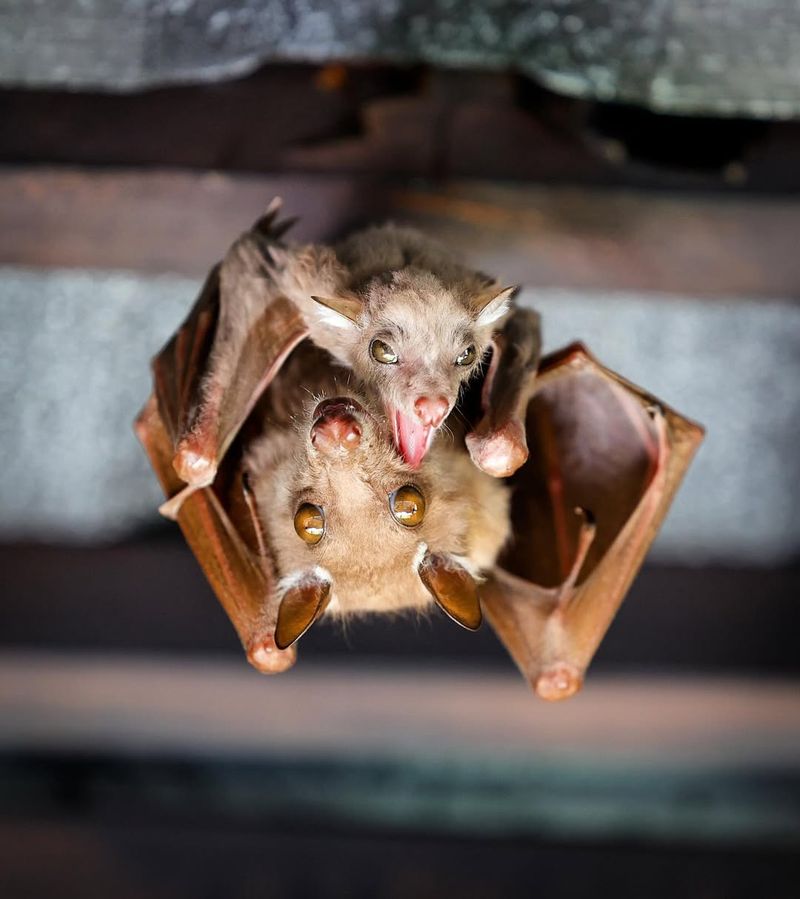
The Hammerhead Bat’s unusual facial structure might look like a mistake of nature, but it’s perfectly suited for its lifestyle. This large fruit bat, native to Africa, is a gentle giant.
Its large head and nasal appendages help amplify its calls, essential for communication in dense forests. The Hammerhead Bat feeds primarily on fruit, posing no threat to humans.
Despite its bizarre appearance, this bat plays a significant role in seed dispersal, aiding in forest regeneration. While it might look peculiar, the Hammerhead Bat is just another winged gardener of the night, ensuring the health of its ecosystem.
21. Shoebill Stork
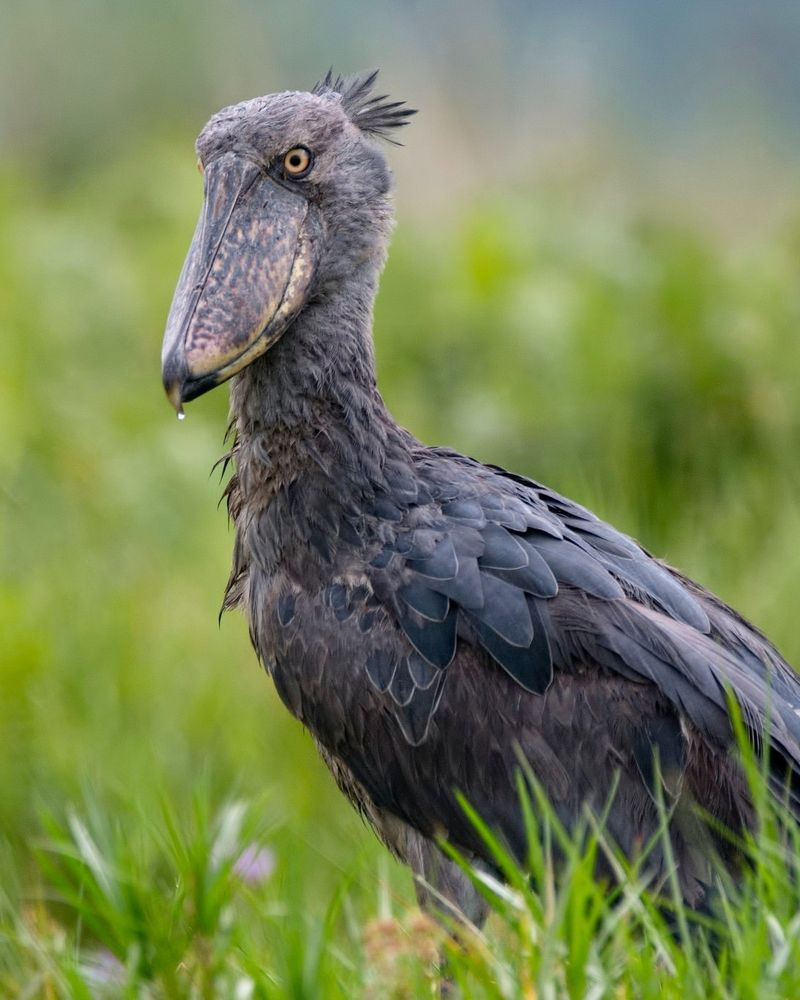
The Shoebill Stork’s massive beak and prehistoric look might be intimidating, but this bird is more curious than carnivorous. Native to the swamps of central Africa, it’s known for its statuesque hunting style.
Feeding primarily on fish and amphibians, the Shoebill uses its large beak to snatch prey with precision. Despite its imposing size, it’s a solitary bird that prefers to avoid human interaction.
Shoebills are indicators of healthy wetland ecosystems. While they might look like creatures from the past, these birds are just another piece of the ecological puzzle, maintaining balance in their watery habitats.
22. Tarantula Hawk
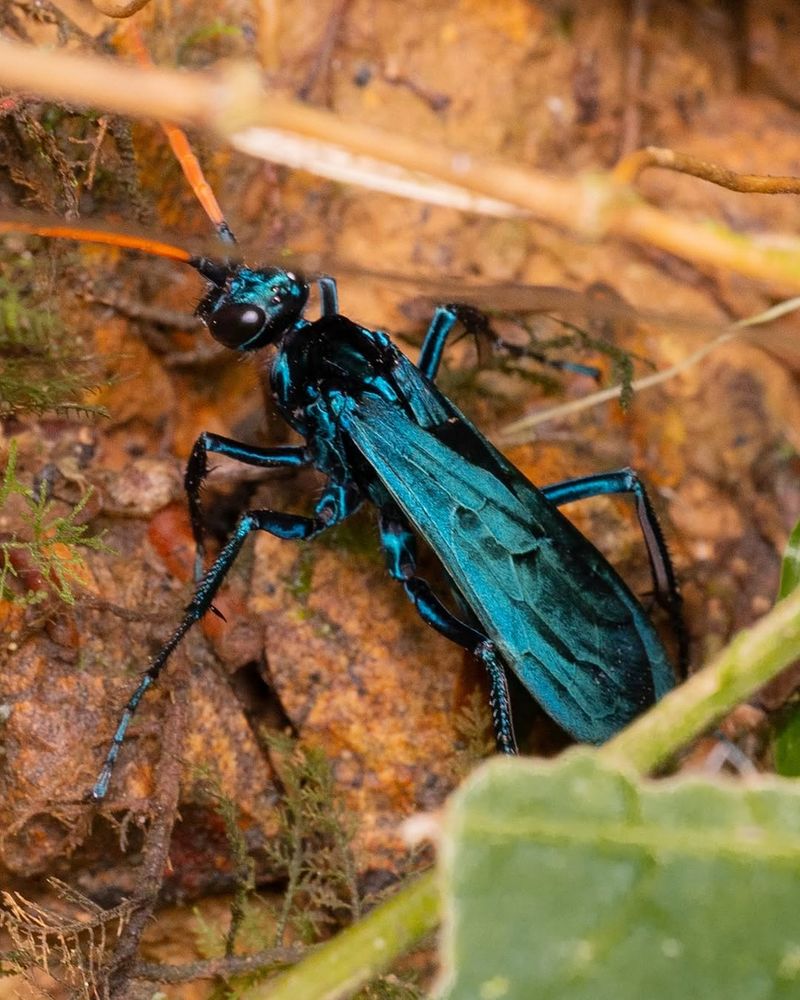
The Tarantula Hawk, a wasp known for its vivid coloration, might seem like a formidable foe. However, this striking insect is more interested in spiders than people.
Despite its intimidating name, the Tarantula Hawk’s sting is rarely used on humans. It preys on tarantulas, which it paralyzes and uses as a host for its larvae. The wasp’s vibrant colors are a warning to predators of its potent sting.
Tarantula Hawks are important pollinators, contributing to desert ecosystems. While they might appear menacing, they’re just colorful contributors to the natural world, with their lives intricately tied to the cycle of life and death in the desert.
23. Narwhal
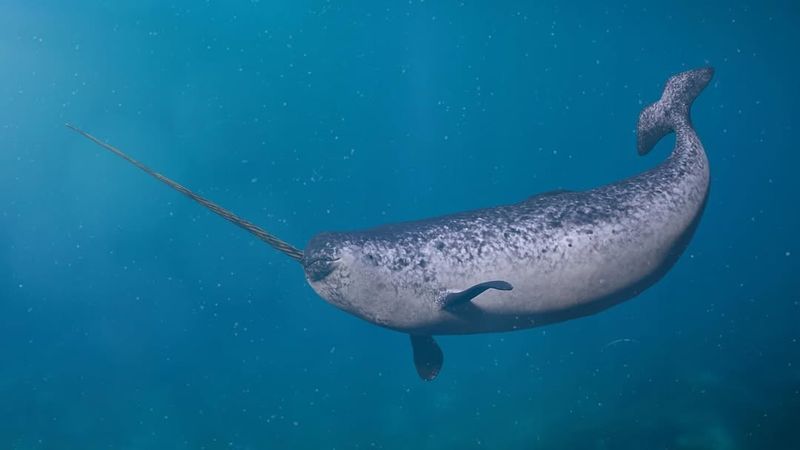
The Narwhal’s long tusk might make it look like a mythical unicorn of the sea, but this Arctic whale is a gentle creature. Its tusk, an elongated tooth, is more a sensory organ than a weapon.
Narwhals use their tusks to detect changes in their environment, such as temperature and pressure. They feed primarily on fish and squid, posing no threat to humans.
These whales are an important part of the Arctic ecosystem, and their tusks provide scientists with valuable data about ocean conditions. So, while they might seem like mythical beasts, Narwhals are just another fascinating facet of marine life, roaming the icy waters with grace.
24. Coconut Crab
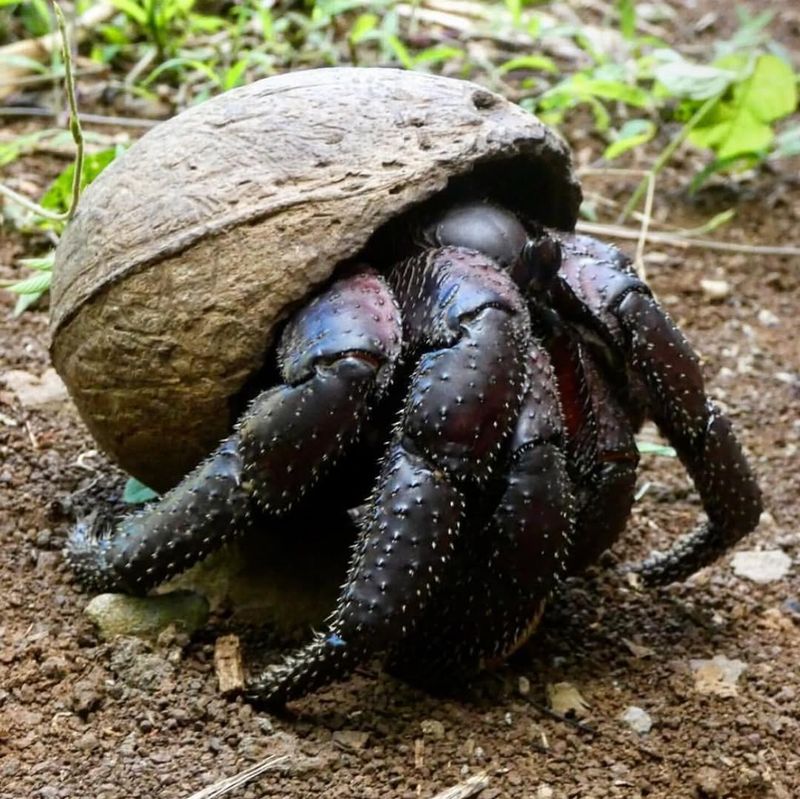
The Coconut Crab, the largest land arthropod, might look like a creature from a prehistoric past with its massive pincers. However, this crab is more interested in coconuts than conflict.
Native to coastal regions of the Indo-Pacific, Coconut Crabs are adept climbers, using their pincers to open coconuts. Despite their size and strength, they’re shy creatures, preferring to avoid humans.
These crabs play a crucial role in their ecosystem by dispersing seeds and aerating soil. While they might appear intimidating, Coconut Crabs are just another piece of the island ecosystem, contributing to its health and diversity.
25. Giant Isopod
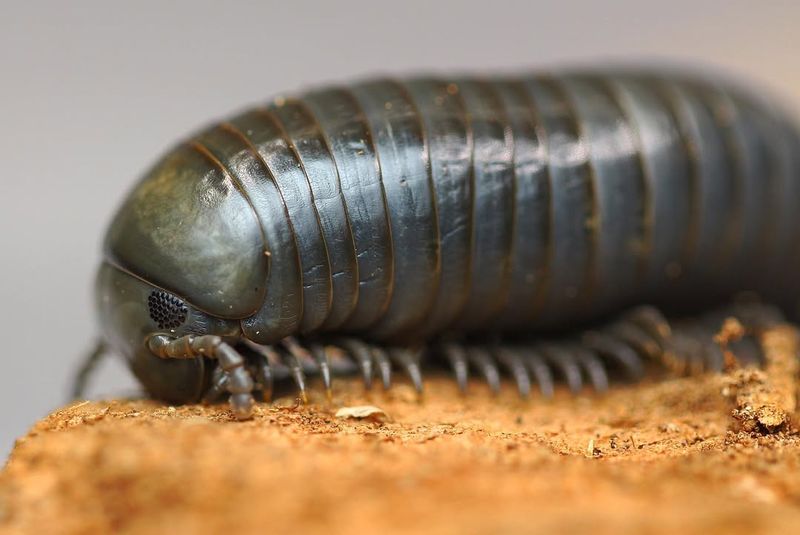
The Giant Isopod’s armored body and many legs might make it look like an alien invader, but this deep-sea crustacean is more scavenger than monster. Found in the ocean depths, it feeds on dead marine animals.
Despite its appearance, the Giant Isopod is harmless, playing a vital role in cleaning the ocean floor. Its large size, up to 20 inches long, is an adaptation to the pressure and scarcity of food in the deep sea.
These isopods are seldom seen by humans, living in a world of perpetual darkness. While they might look bizarre, they’re just another piece of the ocean’s puzzle, contributing to the recycling of nutrients in their deep-sea habitat.
26. Goliath Tigerfish
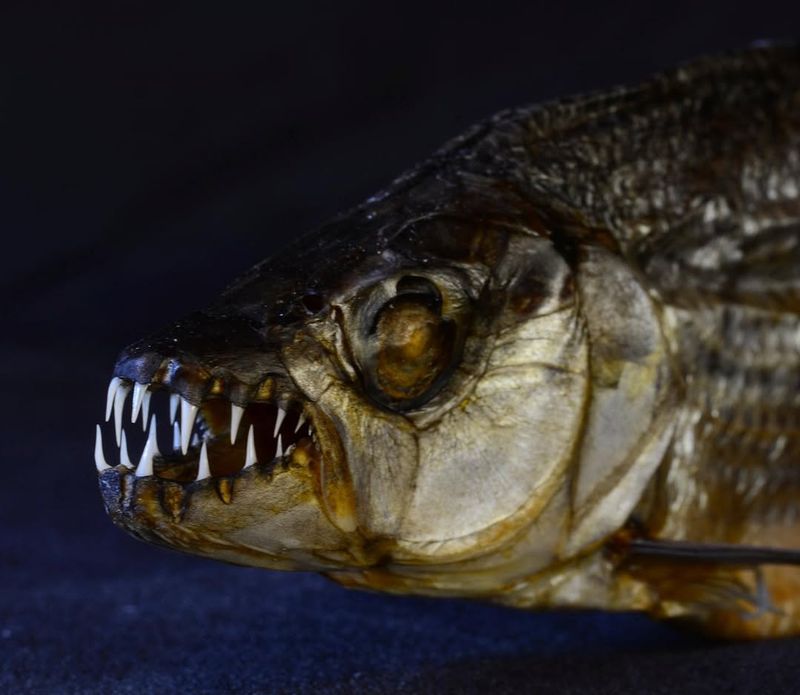
The Goliath Tigerfish, with its razor-sharp teeth and muscular build, might seem like a formidable river predator. However, this African fish is more of an opportunist than a threat to humans.
Feeding primarily on other fish, the Goliath Tigerfish uses its keen senses and powerful jaws to hunt in the murky waters of the Congo River. Despite its fearsome appearance, it avoids human interaction, preferring the quieter parts of the river.
These fish are an important part of the river ecosystem, balancing fish populations and maintaining diversity. While they might look like aquatic monsters, Goliath Tigerfish are simply part of the natural order, with a striking appearance that reflects their predatory prowess.




